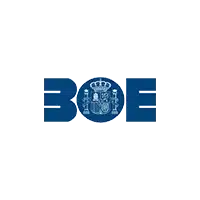The bill of lading is a document with legal and declarative character that shows the existence of a transportation contract between two companies.
The consignment note also serves to inform of the terms under which the agreement between these companies has taken place and assigns the rights to the goods being transported.
Therefore, it is mandatory to formalize the use of the consignment note every time a transport contract takes place. For example, if the goods are to be shipped in a single trip, there will only be one waybill, but if the shipment is to be made on several different days or in several vehicles at the same time, a duly stamped and completed waybill will be required for each vehicle and/or transport.
The Authorities may require this documentation in any en route check or routine inspection.
Who makes the bill of lading?
Below, we indicate who is responsible for creating these bills before the journey:
- Actual carrier: The person who is authorized to make the trip, whether an individual or a legal entity, to transport the goods.
- Contractual shipper: Person who contacts the actual carrier, whether the actual shipper is a logistics operator, etc. …. That is, any person, whether natural or legal, who is an intermediary and takes part in the contracting of the service.
When is a bill of lading not necessary?
The waybill is not required for removals, parcel services or transport of damaged vehicles or accidents.
What is the content?
The contents of a bill of lading are as follows:
- Date of issue and place
- Full name, NIF/CIF, address… (Shipper’s details)
- Full name, NIF/CIF, address… (Carrier’s data)
- Place and date of receipt of goods by the carrier
- Place and date of receipt of goods at destination
- Name, address and recipient’s data
- Specification of the merchandise (packages, identification…)
- In the case of dangerous goods, identification of the code of the dangerous goods
- Quantity of goods to be shipped, identified by weight (kg)
- License plates of vehicles involved in the trip
- Types of packagings packaged in shipment
- Price of transportation
- Indicate whether the transport price is paid by the shipper or the consignee.
- Declaration of the value of the goods
- Instructions for the fulfillment of administrative formalities in relation to the goods being transported
How many copies of the waybill should there be?
The waybill must be used with three original copies, which will be delivered as follows:
- First copy: To be kept by the shipper
- Second copy: Will travel with the merchandise at all times.
- Third copy: To be kept by the forwarder
The consignee may demand that the copy traveling with the goods be returned to him as insurance that the goods have been delivered.
The signature on the waybill may be valid by mechanical means provided that the signatory’s identity is evidenced by a stamp or seal.
Once it is signed, it concludes the agreement and its contents, as well as the receipt of the goods.
If both parties agree, the consignment note can be issued electronically in accordance with current legislation.
Electronic waybill
The electronic consignment note is an electronic record of data containing the same data as the traditional consignment note.
The procedure used to prepare this document must guarantee its integrity in terms of the instructions given at the time of its preparation.
In order to be able to document totally or partially electronically, they must comply with the following rules:
- Method of elaboration and referral.
- Integrity maintenance guarantees.
- Form in which it will be possible to demonstrate that it is the holder of the rights derived from the letter.
- Form in which it will be established to corroborate effective delivery to the addressee.
- Procedures that may be modified in their content.
- Possibility of replacing this electronic document by a different means.
What should it contain?
The electronic consignment note must contain all the aspects that we have mentioned above for any type of document of this type.
The morality of these instructions must always be followed from the moment they are drawn up so that all rules are followed and are complete.
Another aspect is that the instructions in the bill can be modified or supplemented with the provisions of the bills of lading, so the procedure to follow is to ensure the maintenance of the main instructions in each case.
Advantages of the electronic waybill
This document in digital format reduces the error rate and therefore its advantages are the following:
- Enhanced CMR version: It has the advantages of the conventional CMR, but eliminates paperwork and shipping management.
- Reduced costs: Handling costs decrease as no paper is required and shipping is faster and more agile.
- Increased safety: Thanks to eCall systems that automatically call emergency services in the event of a traffic accident.
- Possibility of combination with other platforms.
Fines provided for in the LOTT
Serious violations include the absence of essential data in the control document (Fine: €800 to €1,000)
Very serious infringements in the transport of dangerous goods are not carrying a consignment note covering all the goods transported or improperly registering such goods (Fine: 4,000 to 6,000 euros).
In the case of the latter, if the person responsible has already been sanctioned previously in the previous calendar year (12 months), the fine will be from 6,000 to 8,000 euros.
Request your quote in less than 3 minutes with just one click.


